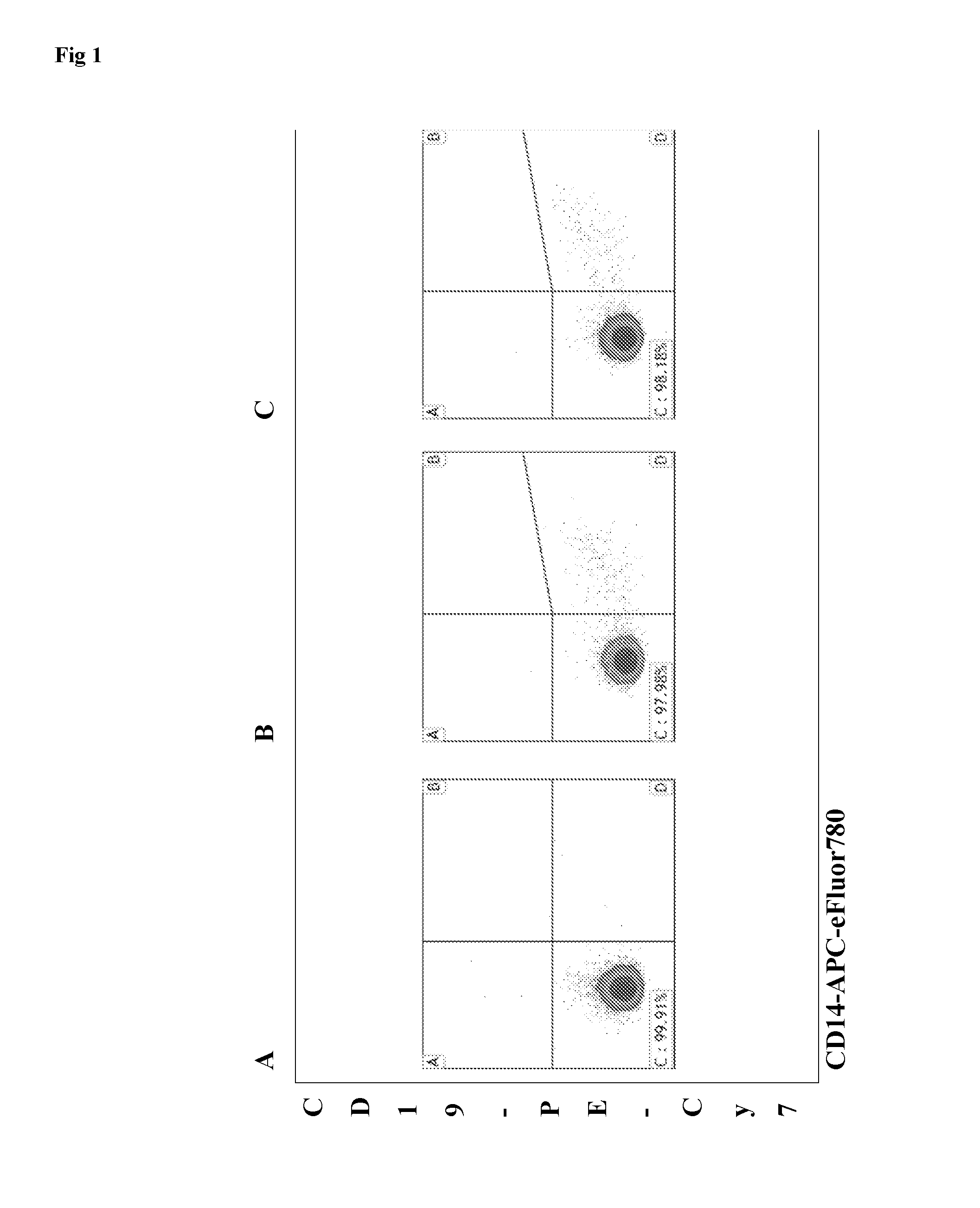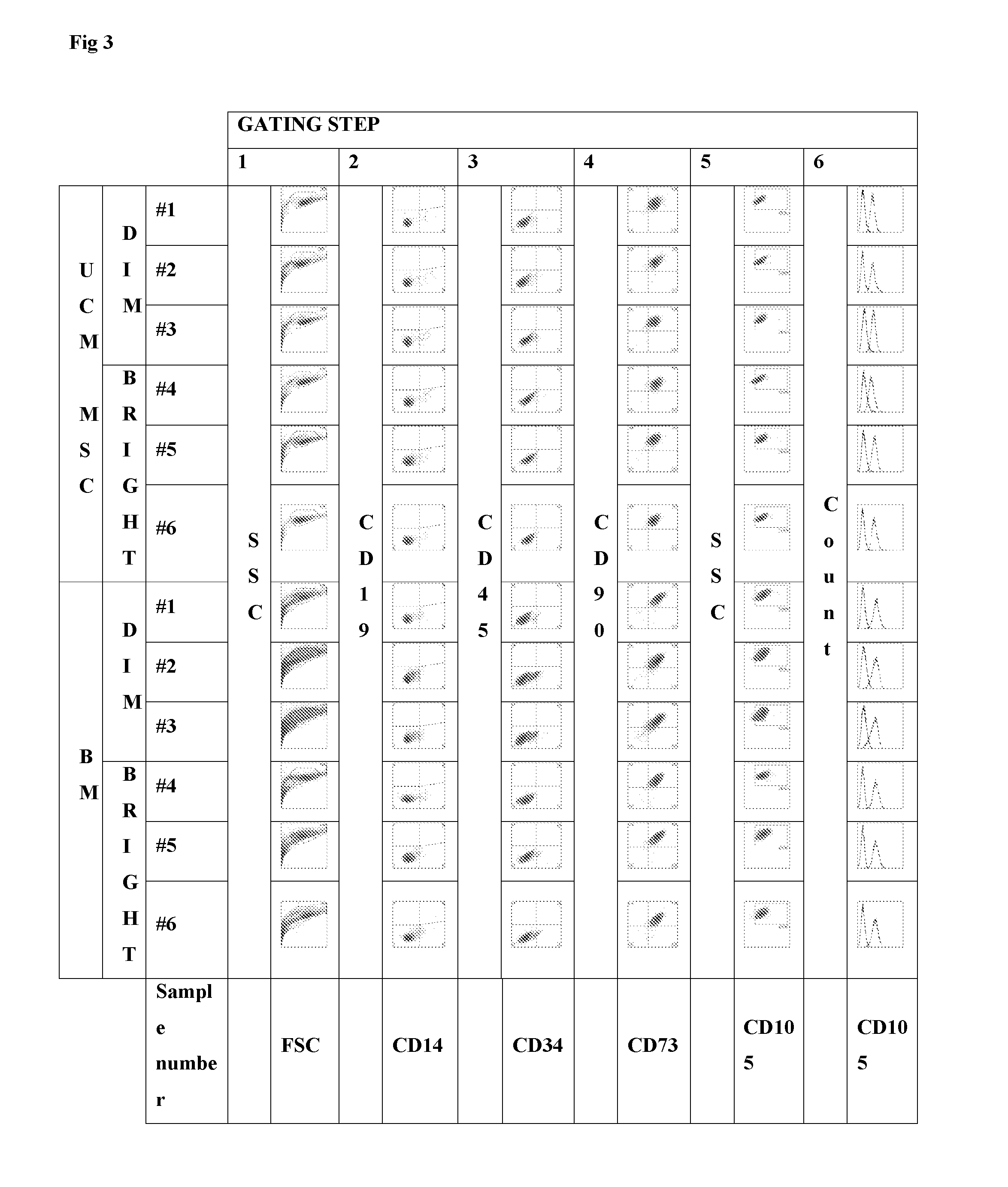Multicolor flow cytometry method for identifying a population of cells, in particular mesenchymal stem cells
a flow cytometry and mesenchymal stem cell technology, applied in the field of multicolor flow cytometry method for identifying a population of cells, in particular mesenchymal stem cells, can solve the problem of introducing a higher technical difficulty in assay developmen
- Summary
- Abstract
- Description
- Claims
- Application Information
AI Technical Summary
Benefits of technology
Problems solved by technology
Method used
Image
Examples
example
Materials and Methods
Collection of Human Umbilical Cord Matrix Samples
[0089]Human umbilical cords and placentas were collected from full-term births after elective caesarean section delivery and aseptically stored at room temperature during transport for less than 90 min from delivery until processing. The umbilical cord was separated from the placenta and a 10 cm section proximal to the placenta was removed and placed in a sterile container. The cord was rinsed with phosphate buffered saline (PBS; Life Technologies Ltd, Paisley, UK) to wash away the blood, and incubated in Hanks buffered salt solution (HBSS) supplemented with Antibiotic-Antimycotic (both Life Technologies) for 2 h at 4° C. This study was approved by the local research ethics committee and all mothers gave informed written consent. Umbilical cord matrix MSCs were prepared according to published methods [13, 14] with some modifications. Cells were then harvested, counted, and cryopreserved in passage 3 in culture med...
PUM
| Property | Measurement | Unit |
|---|---|---|
| threshold | aaaaa | aaaaa |
| cell surface | aaaaa | aaaaa |
| composition | aaaaa | aaaaa |
Abstract
Description
Claims
Application Information
 Login to View More
Login to View More - R&D
- Intellectual Property
- Life Sciences
- Materials
- Tech Scout
- Unparalleled Data Quality
- Higher Quality Content
- 60% Fewer Hallucinations
Browse by: Latest US Patents, China's latest patents, Technical Efficacy Thesaurus, Application Domain, Technology Topic, Popular Technical Reports.
© 2025 PatSnap. All rights reserved.Legal|Privacy policy|Modern Slavery Act Transparency Statement|Sitemap|About US| Contact US: help@patsnap.com



